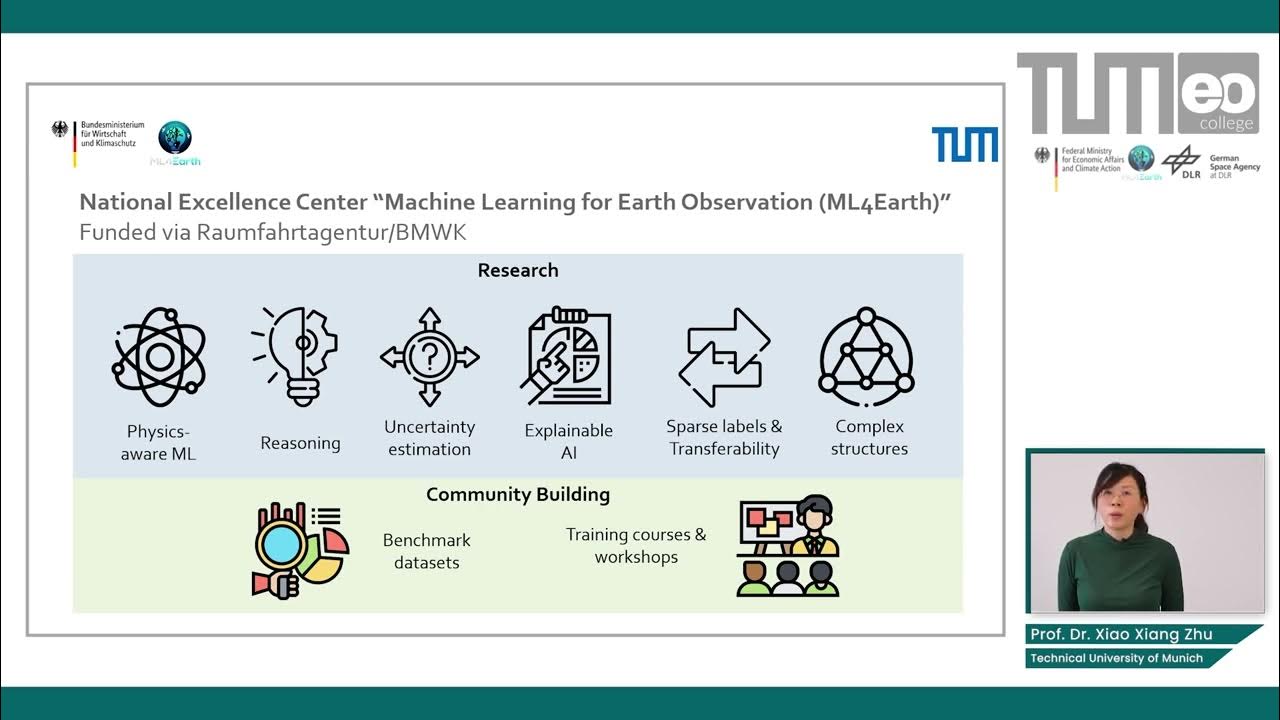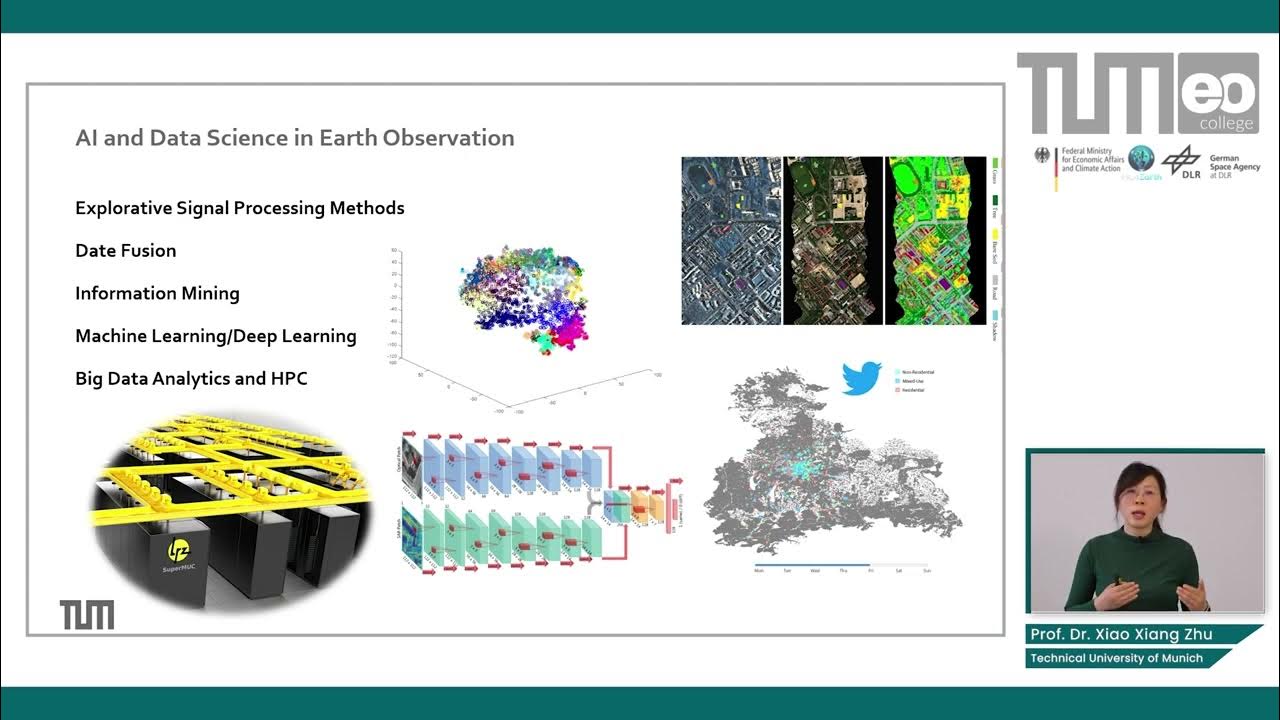Ethics in AI4EO - Case Study
Summary
TLDRThis video discusses the ethical challenges of using AI for Earth observation, particularly in identifying slums. It explores the risks of stigmatization and privacy invasion when labeling areas as slums, focusing on the potential negative impact on residents. The video also examines Western ethical frameworks like consequentialism and deontology, as well as Eastern philosophies such as karma, which emphasize the importance of intention, action, and consequences in ethical decision-making. The content encourages researchers to carefully consider their intentions and methods to avoid harm while achieving positive outcomes for affected communities.
Takeaways
- 😀 AI for Earth Observation is being used to identify slums across the globe, helping to address challenges like overcrowded and underserved living conditions.
- 🤔 Ethical concerns arise when labeling areas as slums, as this can lead to stigmatization and affect property prices, self-perception, and community dynamics.
- 💡 The labeling of slums is context-sensitive, as what is considered a slum in one region may not be viewed as such in another, depending on factors like population density and regional living conditions.
- ⚖️ Ethical considerations include potential breaches of privacy, the possible displacement of people, and the negative societal consequences that come with such labels.
- 🧑🔬 Researchers and policymakers need to balance the benefits of identifying slum areas with the ethical implications, considering both the societal impact and the quality of life improvements that can follow.
- 📊 Consequentialist and deontological approaches both provide frameworks for tackling the ethical challenges in identifying slums, emphasizing either the outcomes or the accuracy and intentions behind the labeling process.
- 🌏 Eastern ethical approaches, like the theory of karma, introduce a new dimension by considering not just the consequences, but also the intention behind an action, which can lead to more nuanced decision-making in research.
- 🔍 In AI research for Earth Observation, modifying the research question can help avoid ethical complications while still achieving the goal of addressing issues like inadequate living conditions without stigmatization.
- 💼 The duty of researchers extends beyond mere academic inquiry. Research funded by taxpayers should serve societal good, and ethical concerns should be integrated from the beginning of the research process.
- 🩺 Eastern philosophy places emphasis on intention and capability in determining ethical actions, suggesting that even if an outcome is not as expected, the action may still be ethical if the intent and ability to perform it are just.
- 🌱 To apply Eastern approaches in research, a six-step approach can be used to ensure that the intention, actions, and knowledge involved align with ethical principles, ultimately leading to positive societal outcomes.
Q & A
What is the main ethical issue discussed in the case study on AI for Earth observation?
-The main ethical issue discussed is the potential consequences of labeling certain areas as 'slums' using AI for Earth observation. This includes concerns about stigmatization, privacy breaches, and the unintended consequences of such labels on people's lives, such as affecting property prices or social perceptions.
What are some of the potential ethical concerns of labeling an area as a 'slum'?
-Labeling an area as a 'slum' can lead to stigmatization, impacting the residents' dignity and social standing. It may also result in negative consequences such as reduced property values, discrimination, and social exclusion. Additionally, it can infringe on people's privacy, especially if the classification does not align with the local context.
How does AI for Earth observation help in identifying slums?
-AI for Earth observation uses satellite images and other data sources to detect patterns of congestion, lack of infrastructure, and other indicators that are typically associated with slums. This technology can help researchers and policymakers identify regions in need of urgent intervention for development projects.
How might cultural and socio-economic differences affect the classification of an area as a 'slum'?
-Cultural and socio-economic contexts can vary significantly across regions, which means an area labeled as a 'slum' in one country may not have the same characteristics or problems in another. For example, densely populated areas in countries like Brazil or India may not be considered slums, even though they would be classified as such in more developed regions due to differing perceptions of what constitutes a 'slum.'
What is the ethical approach of consequentialism, and how does it relate to labeling slums?
-The consequentialist approach focuses on the outcomes of an action. In the context of labeling slums, this approach would suggest that the negative consequences of labeling an area as a slum, such as stigmatization or discrimination, outweigh the benefits, leading to the conclusion that such labels should be avoided.
How does the deontological approach differ from the consequentialist approach in the case of slum identification?
-The deontological approach emphasizes the duty to follow ethical principles, regardless of the outcomes. In this context, it would suggest that researchers must ensure that the data and methods used for slum identification are accurate and justifiable, even if the consequences of labeling an area as a slum could potentially cause harm.
What role does intention play in ethical decision-making, according to the Eastern approach?
-In Eastern ethical philosophies, such as the concept of karma, intention plays a crucial role in determining the morality of an action. It suggests that ethical decisions should be based not just on outcomes but also on the intention behind an action, which should be aligned with righteous duty and a genuine desire to help others.
How does the theory of karma influence ethical decision-making in AI research?
-The theory of karma influences ethical decision-making by emphasizing the importance of the intention behind actions. In AI research, this would suggest that researchers should focus on the ethical intention of their work, such as improving people's lives, and ensure that their methods and outcomes align with this intention.
What does the concept of 'Dharma' represent in Eastern ethical thought, and how does it relate to AI research?
-Dharma represents the righteous or correct action in Eastern philosophy. In AI research, this concept emphasizes the need for researchers to align their work with ethical principles and human values. Researchers must consider their duty to the community and society and ensure that their actions serve the greater good.
How can the six-step approach in the Eastern philosophy be applied to ethical decision-making in AI for Earth observation?
-The six-step approach in Eastern philosophy encourages researchers to evaluate their intention, actions, and knowledge when making ethical decisions. In AI for Earth observation, this means assessing whether the research intentions are ethically sound, ensuring that the methods and actions are appropriate and effective, and confirming that the research outcomes align with the intended goals without causing harm.
Outlines

このセクションは有料ユーザー限定です。 アクセスするには、アップグレードをお願いします。
今すぐアップグレードMindmap

このセクションは有料ユーザー限定です。 アクセスするには、アップグレードをお願いします。
今すぐアップグレードKeywords

このセクションは有料ユーザー限定です。 アクセスするには、アップグレードをお願いします。
今すぐアップグレードHighlights

このセクションは有料ユーザー限定です。 アクセスするには、アップグレードをお願いします。
今すぐアップグレードTranscripts

このセクションは有料ユーザー限定です。 アクセスするには、アップグレードをお願いします。
今すぐアップグレード関連動画をさらに表示

AI and Data Science in Earth Observation - Methodological Research

Ethics in AI4EO - Basic Concepts

Ethics in AI4EO - Applying Ethics to AI4EO

AI and Data Science in Earth Observation - Large Scale Representative Annotated Datasets

AI and Data Science in Earth Observation - Introduction

Observation as a Participatory Action Research method
5.0 / 5 (0 votes)
